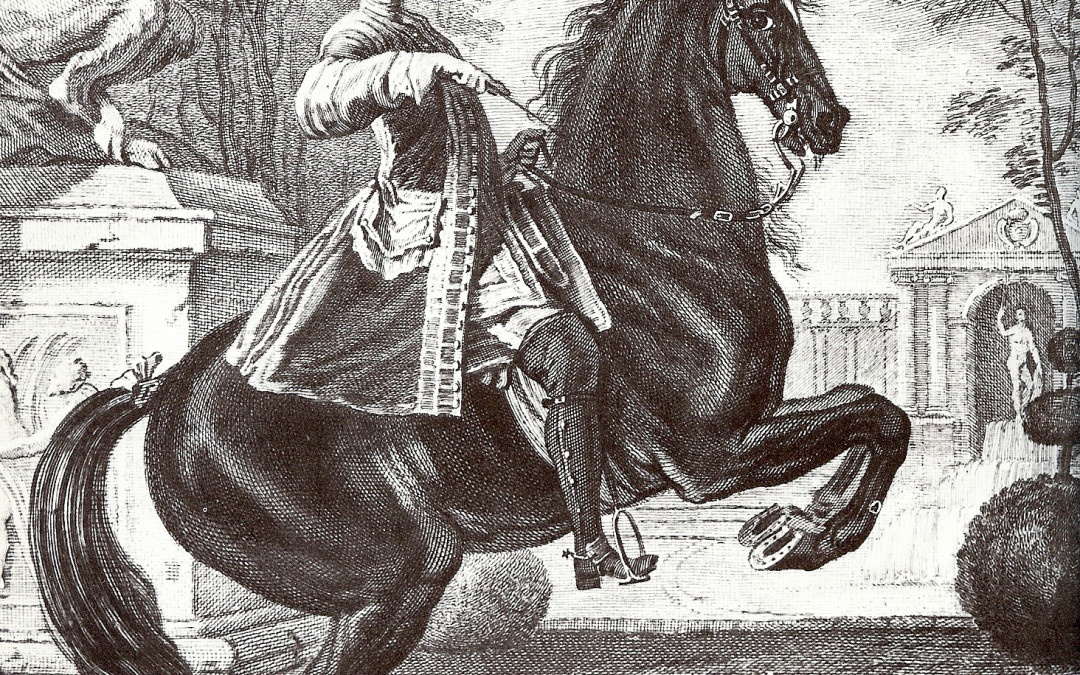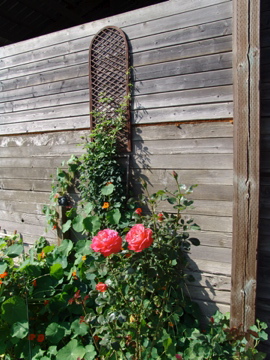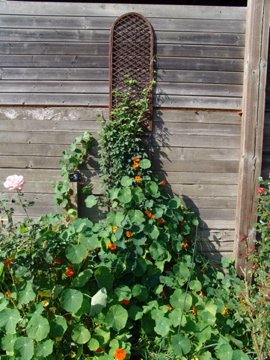
by Craig Stevens | Jun 7, 2015 | Craig Stevens' Blog
Certainly it must be obvious that effort is required in working with the horse. It is not the effort alone that brings a result, but how we undertake the effort that makes our dressage effective or not. One kind of effort is purely oriented toward the achievement of a result. when dressage is practiced in this way there is a sense of struggle and pushing, which is prompted by the sense of a goal. A sense of momentum occurs and the work begins to thrive on its own speed, like water running downhill. Another approach to the effort in our work is fraught with a sense of the tremendous meaningfulness of dressage. There is not a lack of a sense of uplift or inspiration in the work. Instead, there is a feeling of being dutiful and correctness. One just does the work, slowly and surely, trying to perform through an obligation to the order of the dressage tests, the litany of a particular school or a sense of correctness. Whatever comes in front of us, just continue on through; we are on a linear treadmill of dressage. Neither of these kinds of effort has a sense of openness and what precision may be present is frozen space being eaten up; compassion is hard to find in such work. There is inflexibility present and the horse is a simple part of process which engineers a result. When the effort we make is proper, we move along with confidence, making constant progress, with a sense of great dignity. We have a panoramic view of the ground we are working on; we have...

by Craig Stevens | Jun 6, 2015 | Craig Stevens' Blog
To pet, pat, or stroke… what do those things mean? Oxford Advanced Learner’s Dictionary, 8th edition 1.Pet: (verb) to touch or move your hand gently over an animal or a child in a kind and loving way 2.Pat: to touch gently several times with your hand flat, especially as a sign of affection 3. Stroke: a gentle touch, an act of moving your hand gently over a surface, usually several times; to move your hand gently and slowly over an animal’s fur or hair. There are three kinds of touch in classical work; light, gentle and firm. There is a fourth quality which also applies; non-touch. To these simple ideas, we can add the idea of duration and cadence. In general, human petting, patting and stroking are both too harsh and too rapid. It is useful to consider that the at rest heart rate for a horse is half of the rate of a human. When we engage the horse and work around the horse, our normal rate of motion is too fast and while a tame horse has learned to accept the speedy humans, it is much better for us to slow ourselves down. 1.Petting is done at any time and anywhere. It focuses the attention. In general, it may be considered to refer to both the pat and stroke. The purpose is relaxation or attention. 2. Patting is mostly used in concluding the session. It is always gentle and usually applied to the base of the neck or behind the saddle. There is another form of patting which is used to increase attention and blood flow to a...

by Craig Stevens | Jun 5, 2015 | Craig Stevens' Blog
Let your mind be one with the horse. Let that united mind reveal the path. Let the path clarify confusion and let your confusion be transformed into wisdom. This is a summary of the ancient wisdom of dressage. The joining of the two minds in dressage creates its own path which brings the horse and human into the highest realms of training. It is not a linear path, but that is not to say that it may not proceed in a linear way at times. Dressage is a practice of mind and body for both the horse and rider. Awareness is what fills the gaps between the highest aspirations and the physical realities. Knowing that we are aware is to be mindful. Mindfulness in the horse and the human is not a constant state, but something that demonstrates a tremendous mobility. The shift that naturally occur in mindfulness/awareness develop through the process of training a regular cadence. When the horse and human mind synchronizes through common cadence, we find what is called the centaur effect. This is the state in which the mind and the body of the human and horse function as one. Knowing that we are aware is to be mindful. Mindfulness in the horse and the human is not a constant state, but something that demonstrates a tremendous mobility. The shift that naturally occur in mindfulness/awareness develop through the process of training; Training produces a regular cadence and symmetrical deportment. When the horse and human mind synchronizes through common cadence, we find what is called the centaur effect. This is the state in which the mind and...

by Craig Stevens | Jun 2, 2015 | Craig Stevens' Blog
Acclimate, harmonize, direct (magnetize, and enrich) and release are the four stages for establishing a connection with the horse. Acclimate is to be present and gentle. Consistent and reliable kindness gives the horse confidence and forms a desire to connect in both the human and horse. The center is respected and permitted without challenge. Harmonize is learning to mirror and blend action and reaction. It is a matter of give and take which seeks no advantage or influence. Territory is neither lost nor gained as energies blends and flows in a gentle circle of trust. A common center is established. Direction has two parts. To magnetize is to draw toward the center give the gift of closeness and to enrich is to move from the center which is the gift of space. The common center takes on movement. Release is to allow the center to return to its source. The center refreshes itself. It never dissolves because the nature of life is to be embodied and what is embodied always has a center. This is a return to the primordial source which is listening to find the center which has no challenge. This is the circle of connection and control which is present in good dressage. It exists in a confidence which is without words, established in kind and noble connection. Its beauty is without equal and it is a circle in place and a spiral over time. It only ends when life does. This is the start, middle and end of dressage. It has body, feel and mind which always joins itself and makes one. This is a...

by Craig Stevens | Jun 1, 2015 | Craig Stevens' Blog
Good dressage is not about making the horse do anything but instead it is about getting the horse to want to do what we intend. Each time we see any sign of not getting our way, it makes us more aggressive. This is the default setting we learn in the horse world. We just push ourselves into the horse’s territory, like a tank going to war or a spoiled child. We not only show our disrespect, but we invade the horse’s territory and disrupt the delicate balance the horse needs to move. Our mental and physical balance is destroyed as well. We create resistance and then resist the resistance we create. We are trapped in the cycle of our own aggressions. The horse has no choice; flight, fight or shut down. Flight is excused as going forward and praised, but it is a distorted neurotic running forward. It does agree with our storyline for dressage though. Shutting down is deemed lazy and a fight is assumed to be just crazy hypersensitivity. So it is that two out of the three results are covered up with our storylines and are made workable by aggression and our passion for the “system” which we are educated to accept. The last, just crazy, lands the horse who is hyper vigilant or deemed overly sensitive in a place where there is a real danger to the rider or those who handle the horse. Such horses suffer an unhappy life simply because the equestrian culture refuses to listen to the horse. Calm is always first and forward natural arises from it in any dressage which is...







Recent Comments